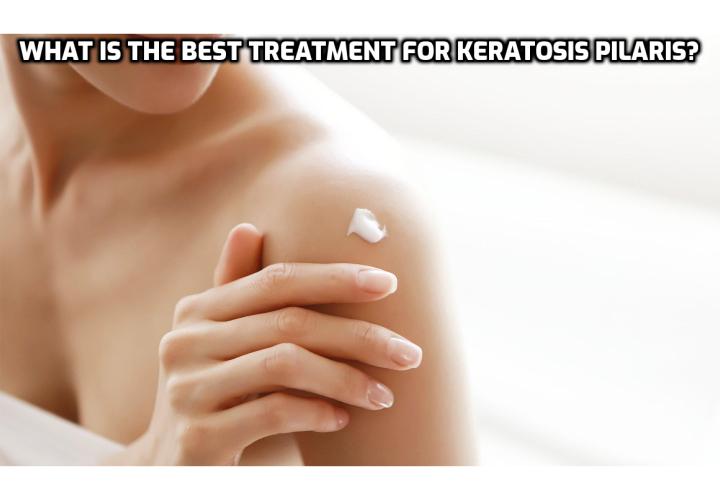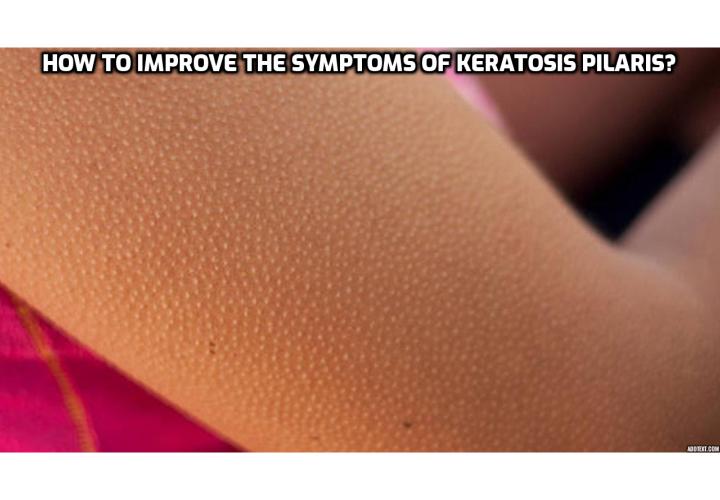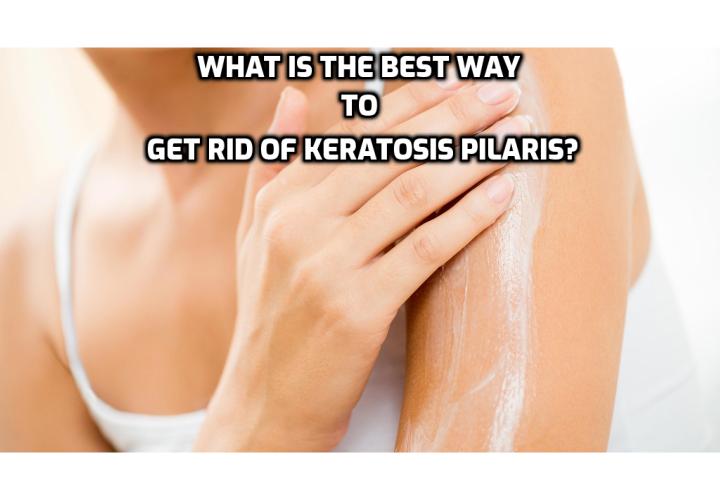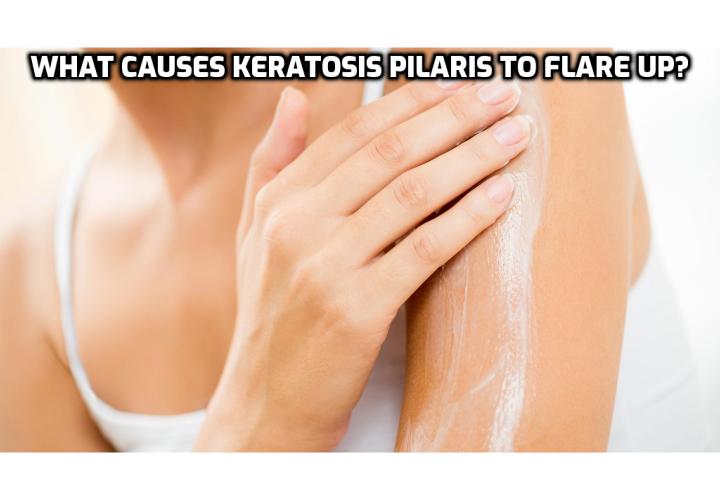Understanding
and Treating Keratosis Pilaris – Temporary and Chronic Keratosis Pilaris
People
who struggle with keratosis pilaris are experiencing a common,
inherited skin condition. This disorder involves raised bumps of skin that
resemble permanent goose bumps along the arms, legs, and buttocks. Some
individuals experience temporary "flare ups" or symptoms of keratosis pilaris, but the majority of patients
suffer from persistent or recurrent symptoms.
Keratosis pilaris is caused by the buildup of
keratin in hair follicles, which creates tiny, raised bumps that are spread in
patches along areas of skin with fine hair. In general, keratosis pilaris is a chronic condition that
requires long-term care and treatment to control its symptoms. Keratosis pilaris often follows a chronic course
of flare-ups and remission in many patients. This chronic course is often
intensified when skin is dry or lacks moisture for extended periods of time.
In
contrast, temporary symptoms of keratosis pilaris are often due to patients
experiencing short-term remission; as a result, a seemingly
"temporary" short-term form of keratosis pilaris does not usually signify the
disappearance of the condition. However, the disorder may be considered
temporary in the sense that most individuals are free from symptoms by
adulthood.
Because
keratosis pilaris is usually a chronic problem
that demands long-term maintenance, most treatments that doctors suggest must
be used perpetually to maintain results and to reduce symptoms effectively.
Initial
treatment for this condition usually involves moisturizing and exfoliating your skin regularly, using soap-free
cleansers when bathing, and installing a humidifier in your home. These methods
can prevent excessive skin dryness and promote healthy
skin-cell turnover, which will limit the extent of keratosis pilaris.
Often, dermatologists advise treating keratosis
pilaris with combination therapy to ensure the most effective reduction of
symptoms. In addition to the at-home remedies described earlier, combination
therapy would also include the use of prescriptions such as topical steroid
creams, retinoid creams, and fading creams to combat skin discoloration and to
reduce inflammation.
If your symptoms still persist with these forms of treatment,
your doctor or dermatologist may also suggest surgical alternatives such as
laser therapy, dermabrasion, or microdermabrasion to soften the skin in affected
areas. These treatments must usually be repeated regularly to ensure maximum
effectiveness.
Understanding
and Treating Keratosis Pilaris – The Different Types of Keratosis Pilaris
Keratosis pilaris, a common and inherited skin
disorder, affects many individuals worldwide. People with keratosis pilaris
experience the buildup of a protective skin protein called keratin, which
creates small, rough bumps along the surface of affected skin. These bumps
generally resemble "chicken skin" and can linger for years. In
general, keratosis pilaris affects the back of the upper arms, the front of the
thighs, and the buttocks. Less frequently, the forearms, upper back, and face
can be affected for some patients as well.
Although most people share these general symptoms of
keratosis pilaris, some variation does occur in their severity, location, and
appearance. Because of their varying symptoms, several sub-types of keratosis
pilaris have been identified.
Keratosis
pilaris rubra (KPR) is the most common variant of this disorder. It is
characterized by widespread, inflamed bumps that are red in color and are
spread along the arms, head, and legs. KPR generally manifests before puberty
and often persists after the onset of puberty, but it rarely involves scarring
or skin damage beyond occasional hyperpigmentation. In contrast, Keratosis pilaris
rubra faceii (KPRF) entails the trademark inflamed, red bumpy patches of skin
that are usually associated with KPR, but in KPRF, these affected patches
mainly occur on the face.
Other less-common types of keratosis pilaris can
also happen. In keratosis pilaris atrophicans (KPA), scarring is often present.
The presence or lack of scarring is one of the primary ways of distinguishing
KPA from KPR.
Keratosis follicularis spinulosa decalvans (KFSD) is similar
to KPA in its effects on the body, but many patients find that its symptoms are
usually more widespread. KFSD causes scarring across the eyebrows, eyelashes,
and scalp in addition to the usual locations of upper arms, thighs, and
buttocks.
Finally, keratosis pilaris alba involves pale-colored, bumpy,
rough patches of skin that does not usually create significant irritation.
These variants of keratosis pilaris are likely
part of the same disease spectrum, according to recent research studies. If you
think you may be suffering from the effects of keratosis pilaris, see your
doctor or dermatologist to determine which form you may be experiencing and how
to treat it.
For
more ideas on understanding and treating of keratosis pilaris, watch these 2
videos:
Keratosis Pilaris Treatment | Bumps
On Skin "Chicken Skin" | Vivienne Fung
Keratosis Pilaris Treatment Update
| Bumps On Skin "Chicken Skin" | Vivienne Fung
This post is from the Keratosis Pilaris Remedy
program created by Alison White. Keratosis
Pilaris Remedy program is a step by step natural system through which
you can achieve a smoother and clearer skin in the shortest possible time. It
comes with a confidence-boosting skin cleanse that will help you in getting rid
of the Keratosis Pilaris condition.
You
will also get a recipe for a home-made face scrub with this product that is not
only very affordable to make, but also offer much more benefits as compared to
the expensive products available in the market.
The
author (Alison White) has also included her special Keratosis Pilaris diet
plan that includes some basic foods and make your skin to reborn and glow up
like your younger days.
Furthermore,
you will get the important information about the special ingredients that you
should consider while buying any skin product. These ingredients can be proved
very useful in eliminating the Keratosis Pilaris permanently.
To
find out more about this program, visit Keratosis
Pilaris Remedy Forever



